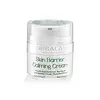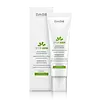What's inside
What's inside
 Key Ingredients
Key Ingredients

 Benefits
Benefits

 Concerns
Concerns

 Ingredients Side-by-side
Ingredients Side-by-side

Water
Skin ConditioningButylene Glycol
HumectantPEG-240/Hdi Copolymer Bis-Decyltetradeceth-20 Ether
StabilisingPolysorbate 80
EmulsifyingCalendula Officinalis Flower
Skin ConditioningPropanediol
SolventGlycerin
HumectantPsidium Guajava Fruit Extract
AstringentCamellia Sinensis Leaf Extract
AntimicrobialRose Extract
Skin ConditioningNelumbo Nucifera Leaf Extract
Skin ConditioningPhysalis Angulata Extract
Skin ProtectingCaprylic/Capric Triglyceride
MaskingSnail Secretion Filtrate
Skin ConditioningLecithin
EmollientBee Venom
AstringentAcetyl Glutamine
Skin ConditioningSh-Oligopeptide-1
Skin ConditioningSh-Oligopeptide-2
Skin ConditioningSh-Polypeptide-1
Skin ConditioningSh-Polypeptide-9
Skin ConditioningSh-Polypeptide-11
Bacillus/Folic Acid Ferment Filtrate Extract
AntioxidantSodium Hyaluronate
HumectantCaprylyl Glycol
EmollientHydrolyzed Silk
HumectantPaeonia Lactiflora Root Extract
Skin ConditioningTrehalose
HumectantPolysorbate 20
EmulsifyingParfum
MaskingEthylhexylglycerin
Skin ConditioningPhenoxyethanol
PreservativeGluconolactone
Skin ConditioningSodium Benzoate
MaskingEthoxydiglycol
HumectantCitric Acid
BufferingPropylene Glycol
HumectantDiazolidinyl Urea
PreservativeIodopropynyl Butylcarbamate
PreservativePotassium Sorbate
PreservativeSodium Phytate
Water, Butylene Glycol, PEG-240/Hdi Copolymer Bis-Decyltetradeceth-20 Ether, Polysorbate 80, Calendula Officinalis Flower, Propanediol, Glycerin, Psidium Guajava Fruit Extract, Camellia Sinensis Leaf Extract, Rose Extract, Nelumbo Nucifera Leaf Extract, Physalis Angulata Extract, Caprylic/Capric Triglyceride, Snail Secretion Filtrate, Lecithin, Bee Venom, Acetyl Glutamine, Sh-Oligopeptide-1, Sh-Oligopeptide-2, Sh-Polypeptide-1, Sh-Polypeptide-9, Sh-Polypeptide-11, Bacillus/Folic Acid Ferment Filtrate Extract, Sodium Hyaluronate, Caprylyl Glycol, Hydrolyzed Silk, Paeonia Lactiflora Root Extract, Trehalose, Polysorbate 20, Parfum, Ethylhexylglycerin, Phenoxyethanol, Gluconolactone, Sodium Benzoate, Ethoxydiglycol, Citric Acid, Propylene Glycol, Diazolidinyl Urea, Iodopropynyl Butylcarbamate, Potassium Sorbate, Sodium Phytate
Water
Skin ConditioningC12-20 Acid PEG-8 Ester
EmulsifyingNiacinamide
SmoothingGlycerin
HumectantDimethicone
EmollientDiethylhexyl Carbonate
EmollientOlus Oil
EmollientLactobacillus Ferment
Skin ConditioningCocoglycerides
EmollientSilica
AbrasiveSuccinic Acid
BufferingPotassium Azeloyl Diglycinate
Skin ConditioningPanthenol
Skin ConditioningSalicylic Acid
MaskingZinc PCA
HumectantSodium Hyaluronate
HumectantLactic Acid
BufferingSqualane
EmollientTocopheryl Acetate
AntioxidantHydrolyzed Jojoba Esters
Skin ConditioningTocopherol
AntioxidantHydroxyethyl Acrylate/Sodium Acryloyldimethyl Taurate Copolymer
Emulsion StabilisingDimethiconol
EmollientXanthan Gum
EmulsifyingParfum
MaskingEthylhexylglycerin
Skin ConditioningPolysorbate 60
EmulsifyingPentylene Glycol
Skin ConditioningSorbitan Isostearate
Emulsifying1,2-Hexanediol
Skin ConditioningCaprylyl Glycol
EmollientPantolactone
HumectantPhenoxyethanol
PreservativeSodium Hydroxide
BufferingSodium Benzoate
MaskingTetrasodium Glutamate Diacetate
Water, C12-20 Acid PEG-8 Ester, Niacinamide, Glycerin, Dimethicone, Diethylhexyl Carbonate, Olus Oil, Lactobacillus Ferment, Cocoglycerides, Silica, Succinic Acid, Potassium Azeloyl Diglycinate, Panthenol, Salicylic Acid, Zinc PCA, Sodium Hyaluronate, Lactic Acid, Squalane, Tocopheryl Acetate, Hydrolyzed Jojoba Esters, Tocopherol, Hydroxyethyl Acrylate/Sodium Acryloyldimethyl Taurate Copolymer, Dimethiconol, Xanthan Gum, Parfum, Ethylhexylglycerin, Polysorbate 60, Pentylene Glycol, Sorbitan Isostearate, 1,2-Hexanediol, Caprylyl Glycol, Pantolactone, Phenoxyethanol, Sodium Hydroxide, Sodium Benzoate, Tetrasodium Glutamate Diacetate
 Reviews
Reviews

Ingredients Explained
These ingredients are found in both products.
Ingredients higher up in an ingredient list are typically present in a larger amount.
Caprylyl Glycol is a humectant and emollient, meaning it attracts and preserves moisture.
It is a common ingredient in many products, especially those designed to hydrate skin. The primary benefits are retaining moisture, skin softening, and promoting a healthy skin barrier.
Though Caprylyl Glycol is an alcohol derived from fatty acids, it is not the kind that can dry out skin.
This ingredient is also used as a preservative to extend the life of products. It has slight antimicrobial properties.
Learn more about Caprylyl GlycolEthylhexylglycerin (we can't pronounce this either) is commonly used as a preservative and skin softener. It is derived from glyceryl.
You might see Ethylhexylglycerin often paired with other preservatives such as phenoxyethanol. Ethylhexylglycerin has been found to increase the effectiveness of these other preservatives.
Glycerin is already naturally found in your skin. It helps moisturize and protect your skin.
A study from 2016 found glycerin to be more effective as a humectant than AHAs and hyaluronic acid.
As a humectant, it helps the skin stay hydrated by pulling moisture to your skin. The low molecular weight of glycerin allows it to pull moisture into the deeper layers of your skin.
Hydrated skin improves your skin barrier; Your skin barrier helps protect against irritants and bacteria.
Glycerin has also been found to have antimicrobial and antiviral properties. Due to these properties, glycerin is often used in wound and burn treatments.
In cosmetics, glycerin is usually derived from plants such as soybean or palm. However, it can also be sourced from animals, such as tallow or animal fat.
This ingredient is organic, colorless, odorless, and non-toxic.
Glycerin is the name for this ingredient in American English. British English uses Glycerol/Glycerine.
Learn more about GlycerinParfum is a catch-all term for an ingredient or more that is used to give a scent to products.
Also called "fragrance", this ingredient can be a blend of hundreds of chemicals or plant oils. This means every product with "fragrance" or "parfum" in the ingredients list is a different mixture.
For instance, Habanolide is a proprietary trade name for a specific aroma chemical. When used as a fragrance ingredient in cosmetics, most aroma chemicals fall under the broad labeling category of “FRAGRANCE” or “PARFUM” according to EU and US regulations.
The term 'parfum' or 'fragrance' is not regulated in many countries. In many cases, it is up to the brand to define this term.
For instance, many brands choose to label themselves as "fragrance-free" because they are not using synthetic fragrances. However, their products may still contain ingredients such as essential oils that are considered a fragrance by INCI standards.
One example is Calendula flower extract. Calendula is an essential oil that still imparts a scent or 'fragrance'.
Depending on the blend, the ingredients in the mixture can cause allergies and sensitivities on the skin. Some ingredients that are known EU allergens include linalool and citronellol.
Parfum can also be used to mask or cover an unpleasant scent.
The bottom line is: not all fragrances/parfum/ingredients are created equally. If you are worried about fragrances, we recommend taking a closer look at an ingredient. And of course, we always recommend speaking with a professional.
Learn more about ParfumPhenoxyethanol is a preservative that has germicide, antimicrobial, and aromatic properties. Studies show that phenoxyethanol can prevent microbial growth. By itself, it has a scent that is similar to that of a rose.
It's often used in formulations along with Caprylyl Glycol to preserve the shelf life of products.
Sodium Benzoate is a preservative. It's used in both cosmetic and food products to inhibit the growth of mold and bacteria. It is typically produced synthetically.
Both the US FDA and EU Health Committee have approved the use of sodium benzoate. In the US, levels of 0.1% (of the total product) are allowed.
Sodium benzoate works as a preservative by inhibiting the growth of bacteria inside of cells. It prevents the cell from fermenting a type of sugar using an enzyme called phosphofructokinase.
It is the salt of benzoic acid. Foods containing sodium benzoate include soda, salad dressings, condiments, fruit juices, wines, and snack foods.
Studies for using ascorbic acid and sodium benzoate in cosmetics are lacking, especially in skincare routines with multiple steps.
We always recommend speaking with a professional, such as a dermatologist, if you have any concerns.
Learn more about Sodium BenzoateSodium Hyaluronate is hyaluronic acid's salt form. It is commonly derived from the sodium salt of hyaluronic acid.
Like hyaluronic acid, it is great at holding water and acts as a humectant. This makes it a great skin hydrating ingredient.
Sodium Hyaluronate is naturally occurring in our bodies and is mostly found in eye fluid and joints.
These are some other common types of Hyaluronic Acid:
Learn more about Sodium HyaluronateWater. It's the most common cosmetic ingredient of all. You'll usually see it at the top of ingredient lists, meaning that it makes up the largest part of the product.
So why is it so popular? Water most often acts as a solvent - this means that it helps dissolve other ingredients into the formulation.
You'll also recognize water as that liquid we all need to stay alive. If you see this, drink a glass of water. Stay hydrated!
Learn more about Water